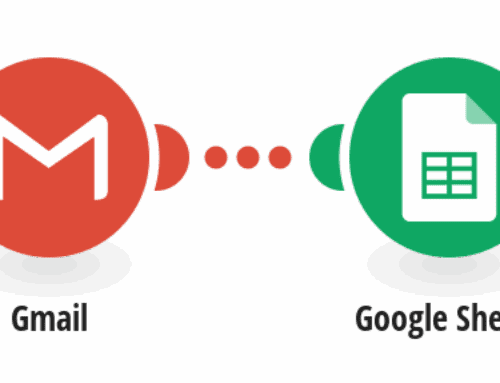Create ActiveCampaign Contacts from New LiveChat Chats: A Seamless Guide
In today’s fast-paced digital world, connecting with customers efficiently is crucial for any business. Integrating your LiveChat with ActiveCampaign can be a game-changer, allowing you to capture leads effortlessly and nurture them into loyal customers. Let’s dive into how you can set up this integration seamlessly!
Understanding the Basics of LiveChat and ActiveCampaign
Before we jump into the nitty-gritty, it’s essential to understand what LiveChat and ActiveCampaign bring to the table. LiveChat is a powerful customer service tool that enables businesses to engage with website visitors in real-time. This instant communication channel not only enhances customer experience but also boosts conversion rates by answering queries promptly.
ActiveCampaign, on the other hand, is a comprehensive email marketing and automation platform. It helps businesses automate their marketing efforts, manage customer data, and create personalized email campaigns. By integrating LiveChat with ActiveCampaign, you combine real-time engagement with robust marketing automation, creating a powerhouse for managing customer relationships.
Why Integrate LiveChat with ActiveCampaign?
Integrating LiveChat with ActiveCampaign opens a world of possibilities for your business. First and foremost, it eliminates the manual task of entering customer data from LiveChat into ActiveCampaign. This automation saves time and reduces the risk of human errors, ensuring that your marketing database remains accurate and up-to-date.
Moreover, this integration allows businesses to engage with potential leads straight from their website conversations. By automatically adding these leads to ActiveCampaign, you can nurture them through targeted email campaigns, increasing the likelihood of converting them into paying customers. Isn’t that a win-win situation?
Setting Up the Integration: Step-by-Step
Don’t worry; setting up this integration isn’t rocket science! All you need to do is follow a few straightforward steps. First, you need to connect your LiveChat account with your ActiveCampaign account. This is usually done through Make.com’s automation template, which acts as a bridge between the two platforms.
Once connected, configure the automation settings according to your business needs. Decide which information you want to transfer from LiveChat to ActiveCampaign, such as contact details, chat transcripts, or any tagged data. It’s crucial to ensure you’re capturing the right data to nurture your leads effectively.
Fine-Tuning Your Data Transfer
Customization is key when transferring data between LiveChat and ActiveCampaign. You want to make sure you’re gathering valuable insights without cluttering your CRM with unnecessary information. Use filters and tags to segment your audience based on their interactions with your LiveChat agents. This way, you can send tailored messages to specific groups, significantly enhancing your marketing efforts.
Additionally, ensure that your data transfer aligns with your privacy policies and GDPR compliance if applicable. Protecting customer data should always be a top priority, and transparency with your audience about how their information is used builds trust and loyalty.
Best Practices for Maximizing This Integration
Now that your integration is up and running, let’s talk about how you can get the most out of it. Regularly review the performance of your integrated tools. Is the data flow smooth? Are there any errors in contact transfer? Addressing these issues promptly ensures that your marketing engine runs like a well-oiled machine.
Another best practice is to continuously optimize your chat interactions. Train your LiveChat agents to identify potential leads and escalate them when necessary. The more effective your chats are, the higher the quality of contacts you’ll funnel into ActiveCampaign, ultimately boosting your sales pipeline.
Analyzing the Results and Adjusting Strategies
An integral part of leveraging this integration is analyzing the data collected and refining your marketing strategies accordingly. Use analytics tools available in ActiveCampaign to track the success of your email campaigns and measure key performance indicators like open rates, click-through rates, and conversion rates.
If certain campaigns aren’t performing as expected, don’t hesitate to adjust your approach. Maybe a different messaging angle or a new call-to-action could turn things around. Remember, flexibility and adaptability in your marketing strategy are vital for continuous growth.
Conclusion: Elevate Your Customer Engagement
Integrating LiveChat with ActiveCampaign can truly transform how you interact with your customers. It offers a streamlined process for capturing leads and nurturing them through personalized marketing efforts. Not only does this boost efficiency, but it also strengthens customer relationships, driving long-term business success.
FAQs
What is the main benefit of integrating LiveChat with ActiveCampaign?
Integrating LiveChat with ActiveCampaign streamlines the process of capturing and nurturing leads, eliminates manual data entry, and enhances marketing efficiency by automating follow-up actions.
How does data transfer work between LiveChat and ActiveCampaign?
Data transfer involves automatically moving customer information such as contact details and chat logs from LiveChat to ActiveCampaign, where it can be used to create targeted marketing campaigns.
Can I customize the data being transferred?
Yes, you can customize the type of data transferred from LiveChat to ActiveCampaign, ensuring that only relevant information is included and segmented appropriately for marketing purposes.
Is it difficult to set up this integration?
The setup process is straightforward and involves using Make.com’s automation template to connect your accounts and configure the desired data transfer settings.
How can I ensure that my data transfer complies with privacy laws?
To comply with privacy laws, ensure transparency with your customers about data usage, implement necessary security measures, and stay updated on legal requirements like GDPR if applicable.









